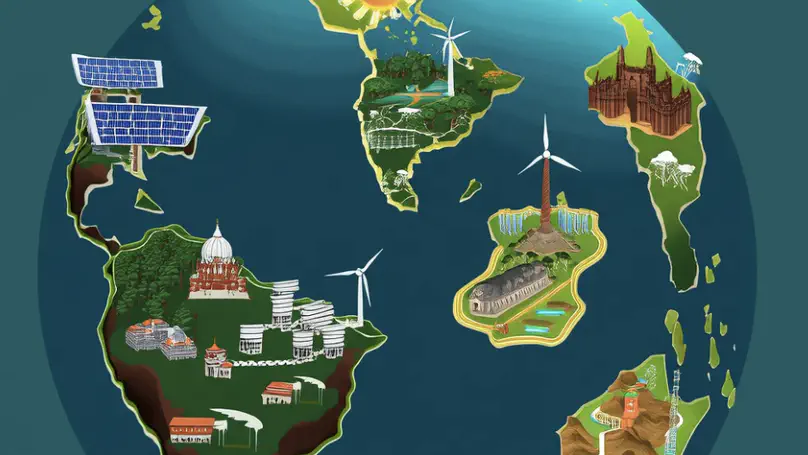About Me
I am a Ph.D. candidate at the Institute of Energy, Environment and Economy, Tsinghua University. In Spring 2025, I was a Visiting Scholar at the California-China Climate Institute, University of California, Berkeley. My research interest focuses on energy and climate policy, environmental and resource economics, and price-based instruments, with a particular emphasis on emissions trading system (known as carbon markets).
My work examines critical aspects of carbon market design—such as cap-setting, sectoral coverage, allowance allocation, and market stability — contributing to development of China’s carbon market through academic publications, public reports, and confidential briefs. I also investigate voluntary carbon markets (e.g., forestry offsets) and inclusive decarbonization mechanisms(e.g., personal carbon accounts). Moving forward, I aim to deepen insights into carbon pricing, policy co-benefits, energy and climate justice, and innovative climate solutions.
My lastest CV can be found in the left icon.
- Energy and Climate Policy
- Environmental and Resource Economics
- Price-based Instruments
- Carbon Market and Carbon Offset
Ph.D. in Management Science and Engineering, 2025
Tsinghua University
B.Sc. in Accounting, 2020
Sun Yat-Sen University
Featured Publications

BRICS nations, accounting for around 45% of global greenhouse gas emissions, have committed to reach carbon neutrality – Brazil and South Africa by 2050, China and Russia by 2060, and India by 2070. In this study, we use a computable general equilibrium model of the world economy to simulate energy system transformation pathways toward net zero, and compare their technological and economic implications. The results show that achieving carbon neutrality necessitates a significant increase in electrification and non-fossil fuel use, with 65% to 82% of energy to be supplied from renewables and 55% to 80% in form of electricity. The study also underscores the essential role of carbon capture and removal technologies, which are expected to contribute 27% to 64% of emission reductions after 2030 across BRICS. The mitigation costs vary by country, ranging from 250 to 390 USD per tonne of CO2 by the carbon neutrality year. Annual investments in the energy sector are projected to be equivalent to 0.8%–3.5% of GDP.

Across 36 forest offset projects in China, the vegetation increased from 2000 to 2022, and the forest gain is also evident inbufer zones, according to an analysis that uses biophysical and land-use variables and a difference-in-difference model.

In the pursuit of its climate goals, China’s national carbon market is actively exploring the introduction of allowance auctioning to strengthen domestic mitigation efforts. However, this process involves complex design elements and faces significant challenges, with a lack of comprehensive analysis and guidance. This study delves into theoretical and practical aspects of key design elements – auction format, eligibility, frequency, size, reserve price, use of revenue, platform, and market access – focusing on the rationale, policy concerns, and market performance. Drawing insights from international and domestic practices, it summarizes a range of auctioning approaches, aiming to offer insights for other emissions trading systems that are considering allowance auctioning. It emphasizes designing auctions tailored to different circumstances and illustrates how these can be adapted to China, where auctions are considered tools to enhance carbon pricing, promote market efficiency, and bolster resilience against carbon border adjustment mechanisms. It also investigates practical issues specific to China – such as policy acceptance, administrative costs, and necessary supporting mechanisms – thereby highlighting potential challenges.

A feasible solution for intelligent data quality management is proposed to support emissions trading system

The design of China’s national emissions trading system (ETS) needs to incorporate economic theory and international experiences, but more importantly, should fully consider China’s current situation to develop an ETS with Chinese characteristics. At the initial phase, China’s national ETS is a rate-based rather than mass-based system. It is essentially a multi-sector tradable performance standard and will serve as a tax or subsidy for different activities. China’s national ETS has a flexible cap associated with actual output of covered sectors, rather than a fixed cap. Covered emissions of regulated firms include both direct emissions and indirect emissions associated with electricity and heat consumed. During the 14th Five-Year Plan period, China’s national ETS should strive to achieve a full coverage of eight key energy-intensive and emissions-intensive industries, with the cap and benchmarks set following the principle of “strictly controlling emissions increase”, so as to facilitate carbon peaking before 2030. During the 15th Five-Year Plan period, sector and firm coverage of the national ETS should be further expanded. The cap setting and benchmark would be determined following the principle of “steadily decreasing emissions”. The proportion of permits for auction would be gradually increased, promoting the role of the national ETS in achieving carbon peaking and carbon neutrality.
